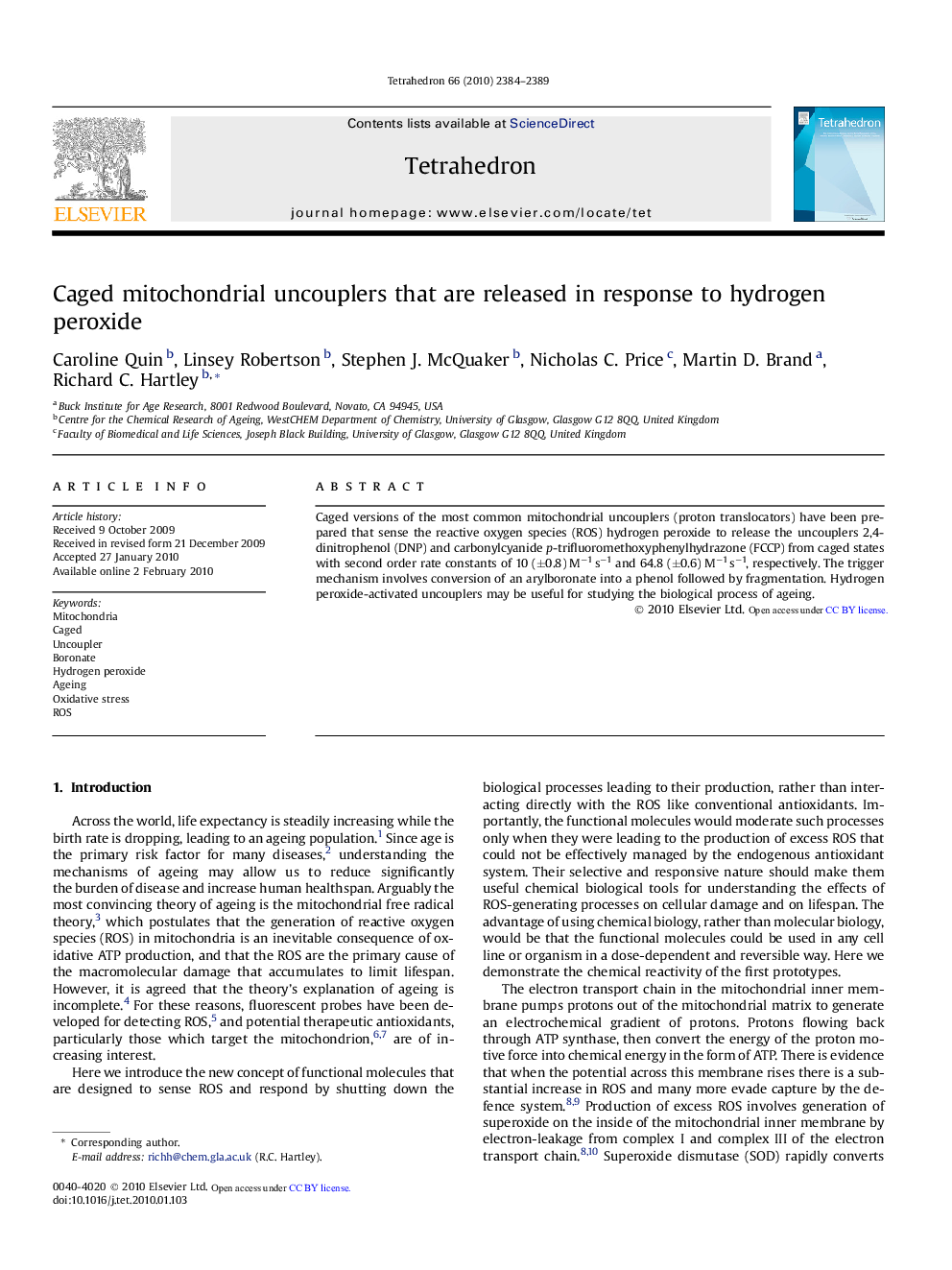| Article ID | Journal | Published Year | Pages | File Type |
|---|---|---|---|---|
| 5224614 | Tetrahedron | 2010 | 6 Pages |
Abstract
Caged versions of the most common mitochondrial uncouplers (proton translocators) have been prepared that sense the reactive oxygen species (ROS) hydrogen peroxide to release the uncouplers 2,4-dinitrophenol (DNP) and carbonylcyanide p-trifluoromethoxyphenylhydrazone (FCCP) from caged states with second order rate constants of 10 (±0.8) Mâ1 sâ1 and 64.8 (±0.6) Mâ1 sâ1, respectively. The trigger mechanism involves conversion of an arylboronate into a phenol followed by fragmentation. Hydrogen peroxide-activated uncouplers may be useful for studying the biological process of ageing.
Graphical abstractDownload full-size image
Related Topics
Physical Sciences and Engineering
Chemistry
Organic Chemistry
Authors
Caroline Quin, Linsey Robertson, Stephen J. McQuaker, Nicholas C. Price, Martin D. Brand, Richard C. Hartley,
